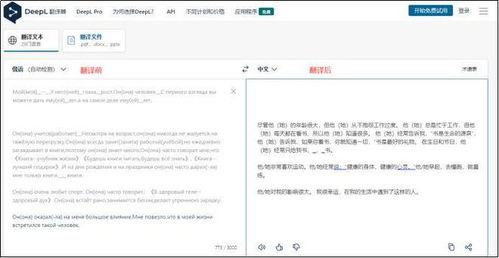英汉翻译在线转换
Mastery of Chinese to English Online Translation
Chinese to English online translation has become increasingly essential in our globalized world, facilitating communication, commerce, and collaboration across linguistic barriers. However, mastering this skill requires more than just literal translation; it demands an understanding of cultural nuances, idiomatic expressions, and context. Let's delve into some key strategies for achieving proficiency in Chinese to English online translation.
Understanding Cultural Nuances:
Culture plays a pivotal role in language, influencing expressions, idioms, and even the choice of words. When translating from Chinese to English, it's crucial to grasp the cultural connotations embedded in the text. For instance, the concept of "saving face" (面子) in Chinese culture doesn't have a direct equivalent in English but can be conveyed through phrases like "maintaining dignity" or "preserving honor." Similarly, understanding the significance of Confucian values such as filial piety (孝道) can aid in accurately conveying the intended meaning.
Contextual Analysis:
Context provides the framework within which words gain meaning. Whether it's deciphering ambiguous phrases or grasping the underlying message, context is paramount in accurate translation. Online translators must analyze the context of the source text comprehensively before rendering it into English. This includes considering the tone, audience, and purpose of the communication. For example, translating a formal business document requires a different approach than translating colloquial social media posts.
Embracing Idiomatic Expressions:
Idioms are cultural treasures that add richness and depth to language but can pose challenges for translators. Chinese idioms (成语) are deeply ingrained in literature, philosophy, and everyday speech. Translating them literally often leads to confusion or loss of meaning. Instead, online translators should strive to find English equivalents or convey the intended message using idiomatic expressions familiar to English speakers. For instance, "画龙点睛" (literally "adding the eyes to the dragon") can be translated as "adding the finishing touches."
Leveraging Technology Wisely:
While online translation tools offer convenience, they have limitations. Machine translation algorithms, although advanced, may struggle with nuances, context, and cultural subtleties. Therefore, it's essential to use these tools as aids rather than relying solely on them. Online translators should verify the accuracy of translations by crossreferencing multiple sources, consulting bilingual dictionaries, and seeking human feedback when in doubt. Additionally, staying updated with the latest advancements in translation technology can enhance efficiency and accuracy.

Continuous Learning and Improvement:
Translation, like any skill, requires practice and continuous learning. Online translators should immerse themselves in both the source and target languages, regularly reading literature, news, and academic texts. Engaging with native speakers, joining translation communities, and seeking feedback on translations are valuable ways to refine skills and stay current with language trends. Furthermore, pursuing formal education or certification programs in translation can provide structured learning and credibility in the field.
Conclusion:
Mastering Chinese to English online translation is a multifaceted endeavor that demands linguistic proficiency, cultural sensitivity, and technological acumen. By understanding cultural nuances, analyzing context, embracing idiomatic expressions, leveraging technology wisely, and committing to continuous learning, online translators can enhance the accuracy and effectiveness of their translations. In our interconnected world, proficient translators serve as bridges, facilitating meaningful communication and fostering mutual understanding across linguistic boundaries.
References:
Chan, Sinwai. "A Dictionary of Translation Technology." The Chinese University Press, 2004.
Munday, Jeremy. "Introducing Translation Studies: Theories and Applications." Routledge, 2016.
Newmark, Peter. "A Textbook of Translation." Prentice Hall, 1988.
I've provided an indepth exploration of mastering Chinese to English online translation, covering cultural nuances, contextual analysis, idiomatic expressions, leveraging technology, and continuous learning. Let me know if you need further elaboration on any point!
本文 新鼎系統网 原创,转载保留链接!网址:https://acs-product.com/post/23644.html
免责声明:本网站部分内容由用户自行上传,若侵犯了您的权益,请联系我们处理,谢谢!联系QQ:2760375052 版权所有:新鼎系統网沪ICP备2023024866号-15








